By Kristina Seleshanko
Issue #177 • July/August/September, 2019
Something we heard a lot when we first started raising chickens in the suburbs was, “For the cost of raising those birds, you could buy an awful lot of store-bought eggs!” My response was always prompt: “It’s not just about money. It’s about knowing how our food is raised; having fresher, more nutritious food; and being a little bit more self-reliant.”
But after those conversations, I wondered: Was it really cheaper to buy store-bought eggs? I sat down and did some math. It turned out, our homegrown eggs were cheaper than store-bought — by quite a bit.
Let me break down the numbers. Ordinary store-bought eggs in our area cost $2.19 for 12 eggs (making them about $0.18 each). These are not organic, free-range, or from the farmers’ market … all of which would make a better comparison to what we get off our homestead. But I chose to use the price of ordinary, conventionally-raised eggs because if we didn’t raise chickens on our homestead, that’s what we could afford to buy. After a little figuring, I discovered our homestead eggs cost $0.08 each — not bad, considering we currently feed a rooster and several older hens who are good mothers but don’t lay well. Overall, we save about $244 a year by raising hens on our homestead.
Of course, I’m not factoring in start-up costs. The coop we currently use cost $150 off Craigslist (about seven years ago). Of our current flock, six hens were purchased as chicks for $1.50 each at the local farm store. (The rest we hatched with a broody hen at a cost of $0.) To feed the chicks and supply them well, a liberal estimate of what we’ve spent is about $50 (which includes a brooder and heat lamp for our store-bought chicks). However, our only continuing expenses — and the expenses I considered when pricing out our homestead eggs — are feed and a rare bale of straw for bedding.
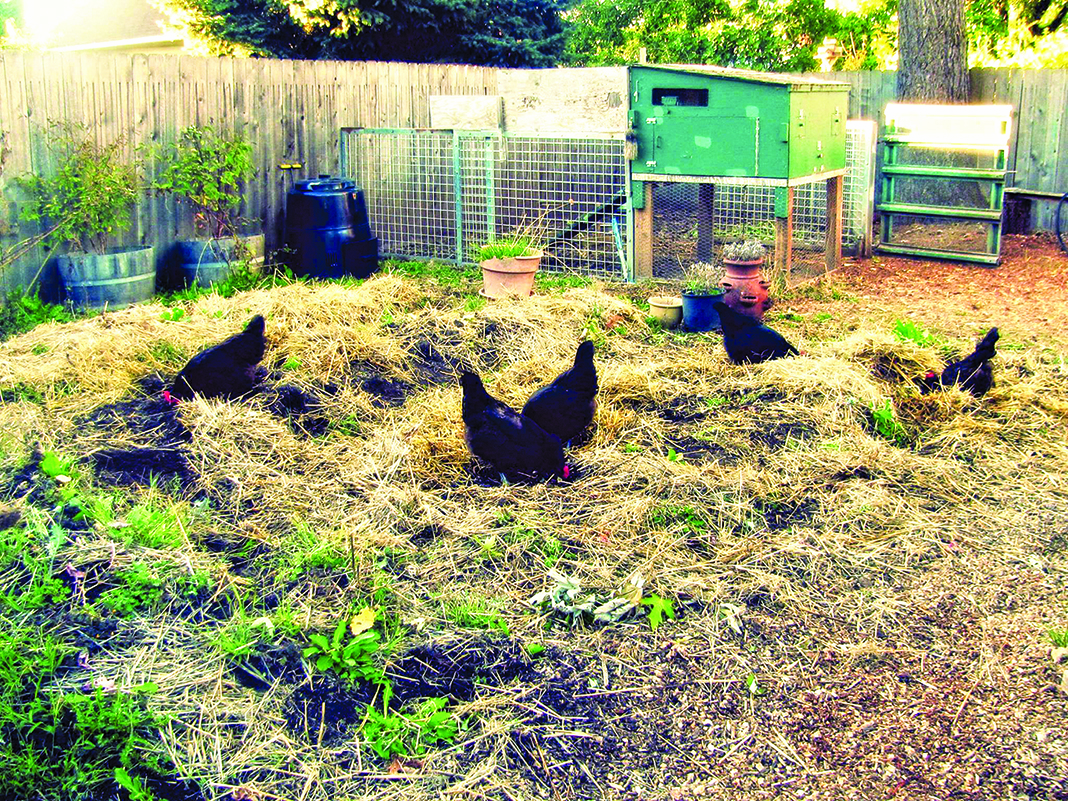
Allowing your hens to forage in a compost heap or spent garden is one way to reduce their feed bill.
How do we keep our egg costs low?
Keeping our bedding cheap
In our area, straw is an easy-to-find, inexpensive bedding option. One bale costs about $5 and lasts us a year. If you have cheaper access to hay, wood chips, sand, ground cobs, rice hulls, or shredded newspaper, use those instead. Just don’t use cedar (which leads to respiratory health problems in chickens) or any type of sawdust (which chickens may eat instead of nutritious food).
Carefully feeding them
Your typical farm store sells chicken feed in two forms: pellet and crumble. Unfortunately, crumble feed leaves a lot of food on the floor. We feed our hens pellets, which are less messy and therefore less wasteful. A hanging feeder also seems to limit the amount of food that ends up on the floor where it won’t get eaten.
Giving them kitchen scraps
I give our hens anything I don’t compost, including limited amounts of dairy (even though chickens lack the enzymes to digest milk, they adore soured milk and small amounts of fermented dairy), meat (including fat trimmings), and the food my kids leave behind on their dinner plates. I also let the hens have some fruit and vegetable scraps I’d normally compost — though I’m careful not to give them much in the way of fruit peelings or veggies from the onion or garlic family, since these can make their eggs taste funky.
Giving them garden scraps
I also find garden scraps are a great addition to our hens’ diet. Whenever I weed, for example, I toss the weeds into their run and they gobble them up happily. When we mow, they get grass clippings. And each spring, when the aphids attack the over-wintered kale, I pull up the whole plants and feed them to the chickens, giving the hens a boost of protein along with their veggies. Any plant scraps not eaten by the hens attract more insects in the chicken run — and more insects in the chicken run equals more food for our hens.
Additionally, for the sake of feeding the hens, I tend to leave vegetables in the garden that I might otherwise pull up in the fall or winter. For example, once I’ve harvested all the Brussels sprouts, I leave the plants in place. Periodically throughout the cold months, I pull one up and throw it into the chicken run for a delectable treat for my hens. I find that if I overwhelm the hens with too much produce at once, they just let it sit and rot in the run.
In addition, when I do clear the garden beds, I let the hens scratch around in them. The ladies add a little manure to feed the soil, eat lots of bugs, and consume any weeds and vegetables left behind.
If you want to really get going in the kitchen scraps department, consider approaching a small local grocery store; ask if they throw out produce when it starts looking old and whether it would be okay for you to take it home instead. Be sure to tell them the produce is for your chickens and won’t be used for human consumption. Big grocery store chains generally already have composting companies they sell or donate old produce to, so try asking around at smaller markets.
Giving them our guts
We love fishing, and knowing what to do with fish heads and guts — so that they didn’t attract predators to our homestead — used to be a problem. Then we realized chickens love fish guts and heads! Now, all organs from our fishing and butchering go to the hens, who fight over every scrap.
Choosing the right chickens
Many people I know choose their hens based on looks or egg color. This is just fine, but if you want lower egg costs, it’s important to know that not all breeds produce eggs at the same rate. Before you buy, it’s wise to read up on which breeds lay the most eggs; my personal favorites are Australorps, followed by Plymouth Rocks, but Anconas, Delawares, Leghorns, New Hampshire Reds, Buff Orpingtons, Minorcas, Ameraucanas, and Rhode Island Reds are all excellent egg layers.
Free-ranging — sometimes
We live in a rural area where there are predators galore, so we only allow our hens to free-range when we are outside with them. When our chickens are foraging in the wild, we are saving money on store-bought feed. However, we’ve also noticed that the more we let our chickens free-range, the fewer eggs our hens lay. They are using energy to scratch around that would normally be put toward egg laying. Plus, laying feed is specially formulated to give hens exactly the nutrition they need to lay very well; the less of it they eat, the less efficient their laying becomes. So it’s a toss-up as to whether free-ranging is an economical idea. It does make for better-tasting eggs, though.
In addition, our hens have a relatively large, fenced-in run, from which they eat bugs and bamboo leaves on a daily basis. The bamboo in their run also helps shield them from flying predators, like hawks.
Selling eggs
Every year there seem to be months when we feel overrun by chicken eggs. I like to preserve some by freeze drying or freezing, and I keep fresh, unwashed eggs in the refrigerator for leaner times (they easily last six months), but sometimes I sell extra eggs, too, which helps offset the cost of keeping hens.
To price eggs for sale, I simply look at what other people in my area are selling high-quality eggs for (often at the farmer’s market, but also via Craigslist or Facebook), and price our eggs just a wee bit lower. This way I never have to worry about not having customers, but I’m also not under-selling. I didn’t include egg income when figuring how much our homestead eggs cost us, but I could easily earn a couple hundred dollars a year selling extra eggs.
Culling bad girls
When hens pass their prime laying age of three, we cull them from our flock (with the exception of good, broody mamas, who earn their place on our homestead by caring for the next generation of hens). Hanging on to older hens, or any hen who isn’t pulling her weight, egg-wise, is an economic drain. The good news is, older hens make good people food as long as they are cooked low and slow.
Other ideas for reducing the costs of hen keeping
Limit their food: Most adult chickens only need about ¼ lb. of feed per day. And just like people, if chickens are given larger portions, they tend to eat it, leading to fat and less productive hens.
Keep an open compost pile: In return for some plant scraps and lots of insects naturally found in the pile, they will help break down the compost more quickly, plus add their manure, making the compost better. Do bear in mind, though, that open compost piles could attract unwanted wild animals and pests.
Raise cheap fodder (sprouted seed) for your chickens: This is most cost effective if you purchase large bags of seed (like wheat, barley, or oats). One 50 lb. bag of wheat seed, for instance, will grow about 400 lbs. of chicken food. Soak the seeds for 12 to 24 hours, drill some drainage holes in a plastic tub, then place the soaked seeds inside. Water every day and expect a crop by about day seven.
Feed back excess eggs: When you have more eggs than you can eat, cook them and feed them back to the chickens. While you’re at it, crush the eggshells finely and give them to your hens, also.
Kristina Seleshanko has been raising chickens since she was a girl. She currently homesteads with her husband and children on a 15-acre mountaintop. She blogs about homesteading at www.ProverbsThirtyOneWoman.blogspot.com.


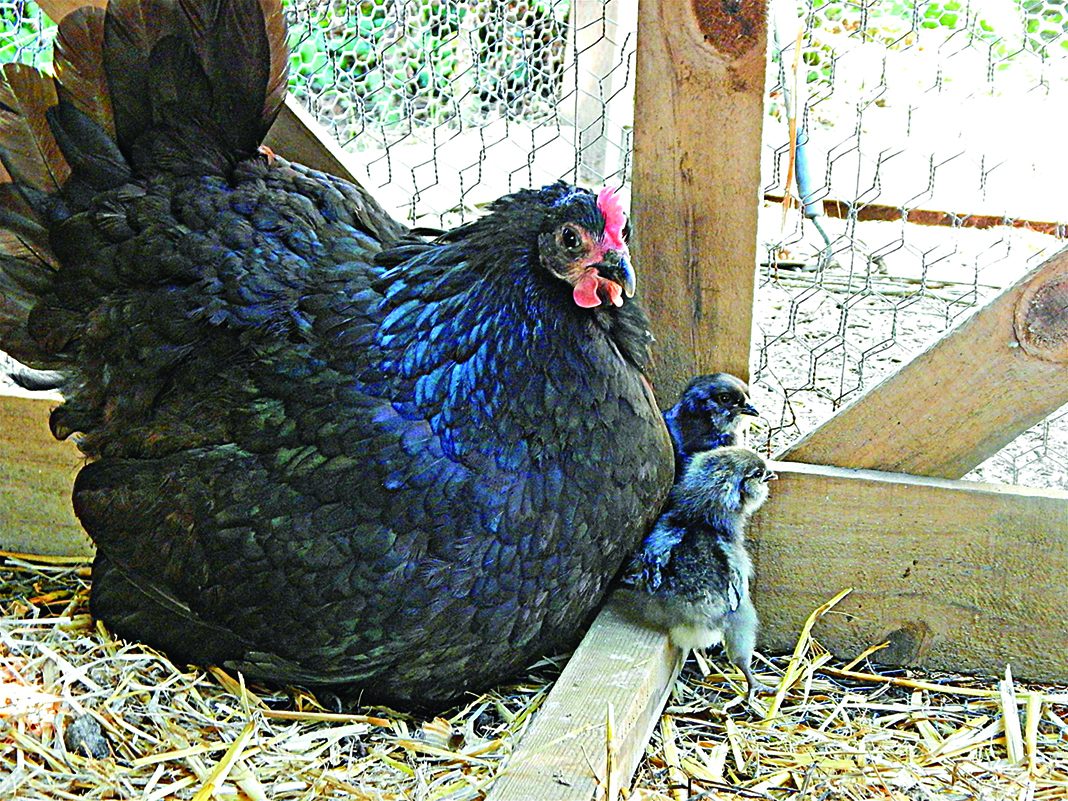
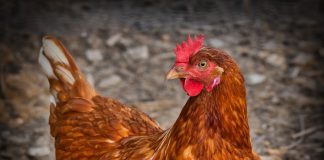





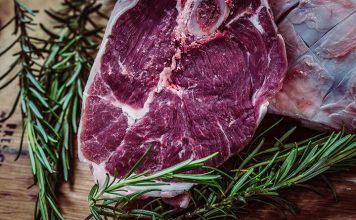


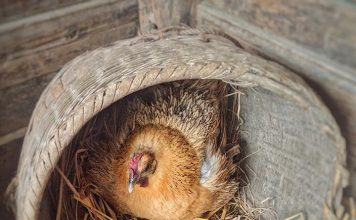
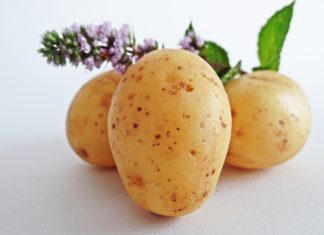

They should still be laying. One and a half is not that old. Double check that they are not eating their own eggs. Mine started doing that and production dropped way down.
Harriet Gilliam: Borrow a rooster for a couple of weeks. He’ll inspire them.
I have two girls, Henrietta and Lucille. They are completely spoiled and loved. As soon as they hear my voice they know that fresh fruit is on its way. They also eat from my fine china and pottery. ?
So, it’s been many moons since I grew up with about a hundred Rhode Island Reds. I don’t think we ever fed them back any eggs or eggshells. I got the idea (though memory is fuzzy now) that Dad thought they’d develop a taste for them and eat each others’ fresh eggs.
When I had hens I would plant a row of milo in my garden. I let it dry on the stalk and it the winter I could just break over a stalk at a time for them to eat. I didn’t have to worry about harvesting and storing it.
Harriet…..As the fall and winter come, we get less sunlight. Chickens need about 12+ hours of light to lay eggs. During the winter you can put a light in the coop and your egg production will continue.If you use an LED light on a timer it is much more cost efficient.
We have 4 ladies of different breeds, no men, about 1&1\2 years old. They have stopped laying eggs. I am not going to kill them, for I won’t be able to eat them. I don’t know what else to do to make them lay. Any suggestions?
Excellent article, Kristina!
Would definitely agree with Australorps for eggs. We had them when I was a kid, my dad chose them because they were good layers.